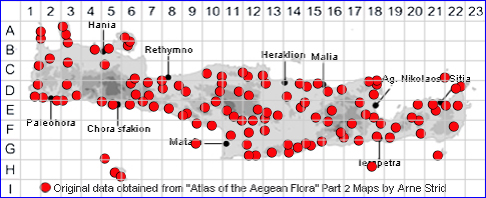
SPECIES DESCRIPTION
CAMPANULA ERINUS
Family and Genus:- See- CAMPANULACEAE/Sect. CAMPANULA
Common Names:- None
Homotypic Synonyms:- Erinia campanula, Roucela erinus, Wahlenbergia
erinus.
Meaning:- Campanula (L) Bell-like.
Erinus (Gr) Of-spring.
General description:- Slender, erect or spreading annual, sparsely patent-
pubescent throughout
Stem:-
1) 3-10(-30) cm, dichotomously branched, weakly angular and striate.
Leaves:-
1) 1-2 cm, alternate or opposite, ovate or obovate. margins, crenate-dentate
sometimes slightly lobed, setose. sessile.
Flowers:-
1) Terminal and axillary, sessile.
2) Calyx:
a) teeth, erect, acute, patent. after anthesis. shorter than the corolla.
3) Corolla, 3-5 mm, inconspicuous, slightly exceeding the calyx, cylindrical, pale
blue.
4) Bracts, with 1 or 2 pairs of blunt teeth.
5) Stigmas, 3.
6) Ovary, 3-locular
Fruit:-
1) Capsule, urceolate, pendent.
Key features:-
1) Calyx, without appendages between the teeth.
2) Flowers, sessile.
3) Corolla, 3-5 mm.
4) Stigmas, 3.
5) Ovary, 3-locular
Habitat:- Rocky slopes with dry open shrubby vegetation , screes, rock ledges,
stone walls, margins of terraced fields and olive groves, generally on limestone,
0-800(-1300) m.
Distribution:- Throughout Greece but less common in the interior. - Widespread in
the Mediterranean region and SW Asia. Widely distributioned across Crete.
Flowering time:- Late March to mid-June.
Photos by:- Fotis Samaritakis
